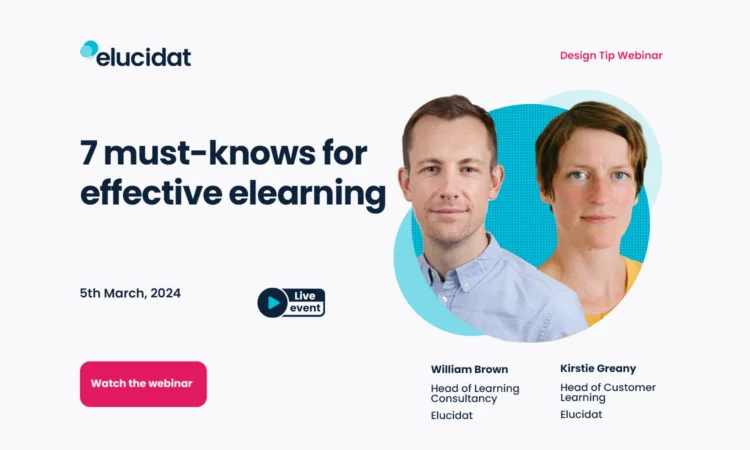Designing engaging elearning: 3 practical changes to make today
8 minute read
What do you get when you ask 500 learning designers to answer the question: how do you make elearning more engaging? We found out when we ran an online workshop on this very topic. From creating a connection to getting truly interactive, we explored how people are tackling the elearning engagement challenge. Read on to discover the collective list of ingredients any designer needs to make engaging elearning, as well as tips and examples to make it active and personalised.
Watch the workshop – with Kirstie Greany, Elucidat, and Cammy Bean, Kineo.
If you want to skip ahead and level-up your elearning design skills, explore the ‘How to create engaging elearning’ certified course by clicking below!
What are the ingredients of engagement?
It goes without saying that an engaged audience is more likely to learn. But what does it mean to be engaged? Engagement can mean a lot of different things to different people. So, before we explored how to achieve it, we wanted to define it.
What L&D professionals said:
We asked the L&D professionals in our workshop what they thought engaging learning looks like. Here’s what they said.
- Captures attention: There’s lots of things vying for peoples’ attention. If your digital learning is going to be effective, it needs to grab their interest and keep it.
- Maintains interest: Don’t start with a great hook, then forget about maintaining your people’s attention. Keep it entertaining throughout the learning experience.
- Generates action: Learning is all about changing people’s behaviors and habits. People need to be able to do something with it, otherwise it’s wasting their time.
- Memorable: How well do you remember the last elearning you completed? If learning is going to have a longer term impact, it needs to stick in people’s minds.
- Recommended: Word of mouth has long been recognized as a powerful marketing tool. So, there’s no greater sign of a successful learning experience than people talking about it.
- Realistic: Learning needs to clearly relate to the real-world workplace. If learners have to put in effort to make this connection, they’re less likely to engage.
- Evokes emotion: Engage learner’s hearts, as well as their minds. Striking up emotions and connecting with people are crucial to getting learners involved.
- Hits trigger points: Effective learning should trigger people to think, feel and take action. That means reflecting, trying, failing, testing and doing rather than just clicking.
What employees said
How do employees (learners) answer the same question? This is how employees across global organizations describe in their own words what engaging elearning is and isn’t.
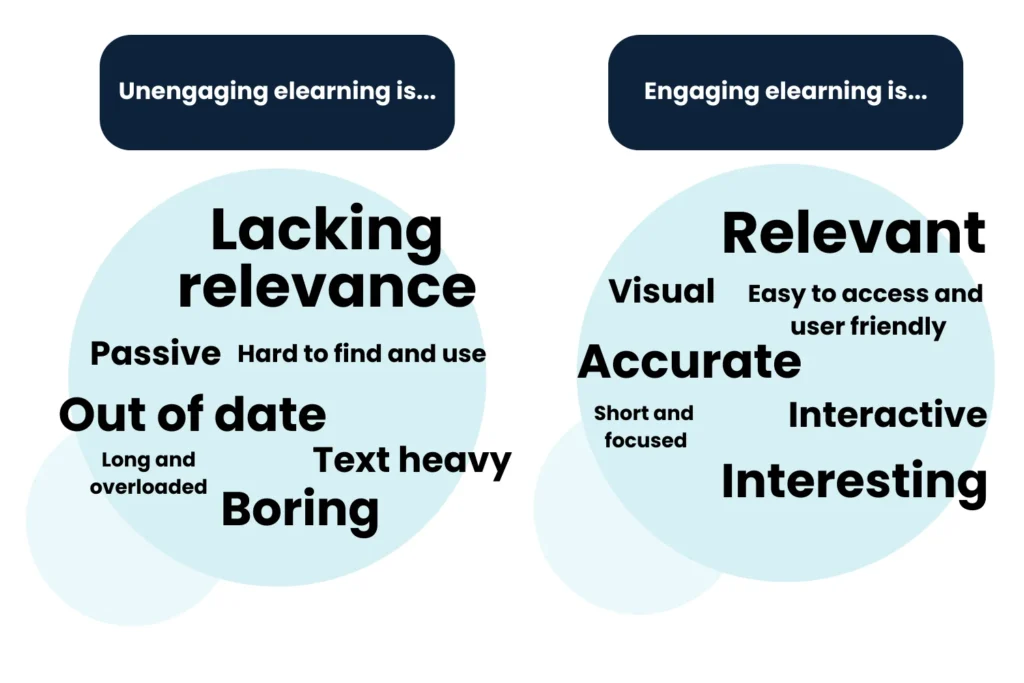
With 60% of employees in large organizations rating their elearning as fair to poor, it’s clear that learners are unengaged more often than not. So, what needs to change?
3 examples of engaging elearning
Here are some great examples to get you inspired.
1. Immersive stories
Storytelling is an incredibly powerful force for learning and memory. This scenario-based learning grabs your attention by immersing you in the story and allowing you to make decisions that control the outcome.
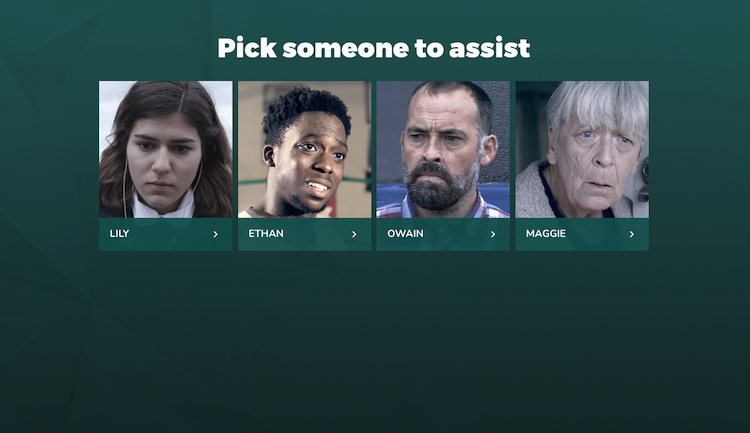
2. Meaningful interactivity
Many employees in our survey said they didn’t engage when elearning lacked interactivity. But what does interactivity mean to these learners? From their answers it was clear it wasn’t about clicking. It’s about making compelling reasons to interact. This Diversity, Equity and Inclusion example speaks directly to the learner and gets them to reflect on their experience to get them engaged in the subject.
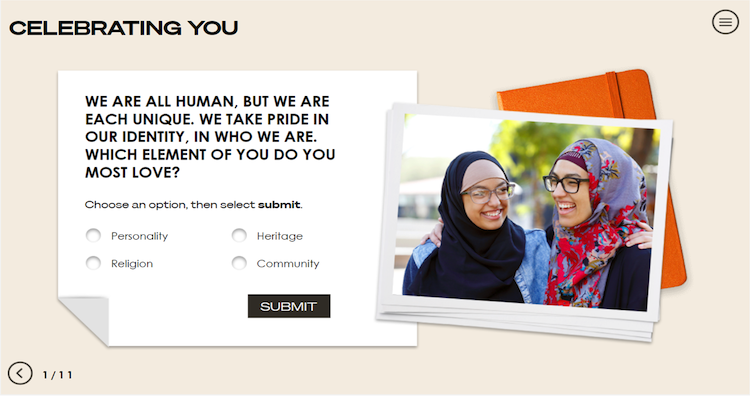
3. Genuinely useful
Engaging elearning doesn’t have to be highly emotional or immersive or really complex. It can just be really useful. This microlearning example is part of an onboarding campaign for new starters.
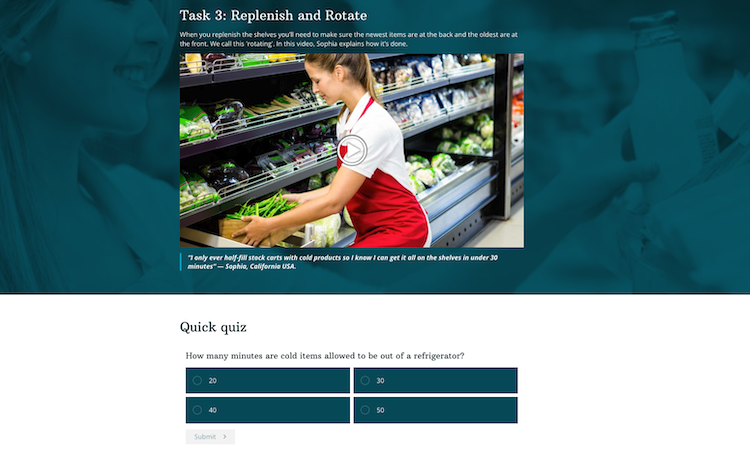
3 practical ways to designing engaging elearning
1. Why audience needs matter
Everyone agreed that you can’t create engaging elearning and choose the right design if you don’t understand your audience first.
“Even if you spend just an hour getting under the skin of your audience, then chances are you’re going to make your learning experience much more engaging, and therefore much more impactful.” – Kirstie Greany, Head of Customer Learning, Elucidat
Here’s some of the ways that the L&D practitioners came up with to discover their learners’ needs.
Ask your audience: Go straight to the source and find out what your learners want and need.
Activities:
- Surveys
- Interviews
- Focus groups
Questions:
- What’s the hardest part? What are the barriers?
- What do you do when you get stuck?
- How do you feel about X?
- Where are you likely to be when you ‘learn’?
Ask business leaders: Stakeholders often come prepared with a case for why the learning’s needed. But don’t just accept this at face value. Dig a little bit further. Ask for the evidence of this need.
Activities:
- Run a workshop
- Meeting the stakeholders
Questions:
- What’s the business goal?
- How do you know this needs improvement?
- What does good look like to the business?
- What do you need people to do?
Observe: Go out and find the evidence of need for yourself. Ask learners to walk you through what they do.
Activities:
- Real life or virtual observation of tasks
- Attend and review the current training
Questions:
- What does good look like?
- What can go wrong?
Review data: If you’re going to move beyond what the business thinks it needs, you need data. Data isn’t just spreadsheets. It can be qualitative as well as quantitative, and come from lots of different places.
Activities:
- Evaluation data
- Feedback rounds
- Audit reports
Data:
- Retention rates
- Sales data
- Customer feedback
- Internal feedback
This Capture template is a great free tool to help you capture your audiences’ needs.
2. Making learning active
Once you know what your audience needs, you can focus on how to make your elearning meaningfully active. Activity is critical for keeping them engaged in your learning experience and a key ingredient in engagement. But, of course, not all activity is the same. Cathy Moore highlights that there’s a difference between testing and practicing learning.
- A test question asks people to recall information. It takes place in an abstract world.
- A practice activity asks people to not only recall information, but also apply it to a specific, realistic situation.
We asked the L&D professionals in our workshop what kinds of activities they use to engage learners in practice. Here’s what they said.
Online activities
- Scenario-based learning
- Diagnostics that personalize learning
- Game-based simulation
- Watch a demo then review
- Post activity reflection
Offline activities
- Role play
- Practice with peers
- On-the-job worksheets
- Coaching circle
Reflective activities
Remember, activity isn’t just clicking, dragging more and revealing more. It’s the thinking that matters.
‘’If I ask you to consider: What’s a project that you recently struggled on? And what’s one tip from what we’ve been talking about today that you could apply to that? You can’t help but start thinking about it. Reflective questions are really, really powerful interactions for engaging the brain.’’ – Kirstie Greany, Head of Customer Learning, Elucidat
Here are some ways to use reflective interaction to make learning really stick:
- Ask questions
- Use confidence rating
- Encourage note taking
- Provide space for reflection
3. Going personal
We all know that one size doesn’t fit all. What’s a relevant activity or relatable story for one person, may not be right for someone else. And this is something that learners notice.
62% of employees said having relevant content was the most important factor in engaging elearning.
The State of Digital Learning Report, Elucidat 2023
If something is really relevant and useful it gives people intrinsic motivation to use it. So, how do you achieve this?
Here are some ways the L&D professionals in our workshop said they approach personalizing learning content
- Upfront diagnostics: Ask targeted multiple choice questions, then serve up tailored content.
- Menus that provide choice: Ask your learners what they want or need to know, then let them tailor their learning experience.
- Role selectors: A simple “role filter” at the beginning of the learning experience will serve up the topics or pages that apply to that role.
- Context and examples: Don’t just tell learners what to do, include real life examples of how these skills are applied in their day-to-day work.
- Confidence checks: Ask your learners how they’re feeling, then adapt the approach to their confidence levels.
- Competency based branching content: Get your learners to answer questions and make scenario-based decisions, then show them the impact of their choices.
- Keep it conversational: Speak to your audience at the right level and in the appropriate tone of voice to create a more relevant learning experience.
- Build a work plan: Get learners to reflect on, and build a plan for, how they’re going to apply the learning in their work.
- Offline tasks: Keep your digital learning generic but include offline tasks, such as team activities, that put it into the learner’s context.
Quick examples of personalized learning
Here are a couple of examples of impactful personalized learning in practice. There’s many ways to achieve this though!
Create a personal plan
Get your learners reflecting on their development needs, then provide a plan to help them develop their skills. This personalized toolkit asks questions about users’ current habits and struggles and then serves up a tailored report on areas for improvement.
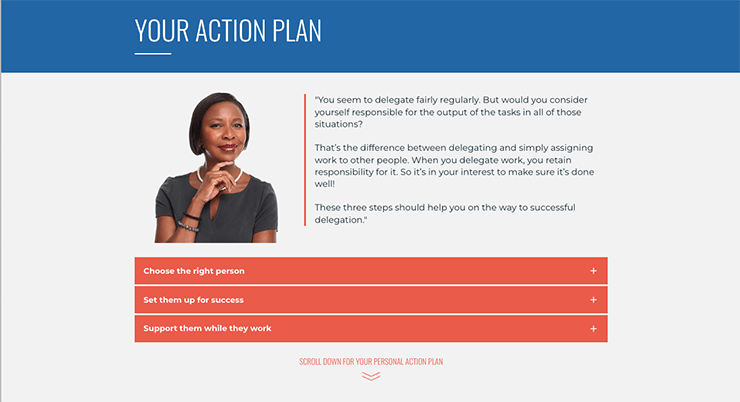
Providing choice
By including reflective questions and giving clear choices, people can tailor their own learning experience. This performance improvement guide encourages learners to commit to action by choosing one of three next steps to learn more in the real world.
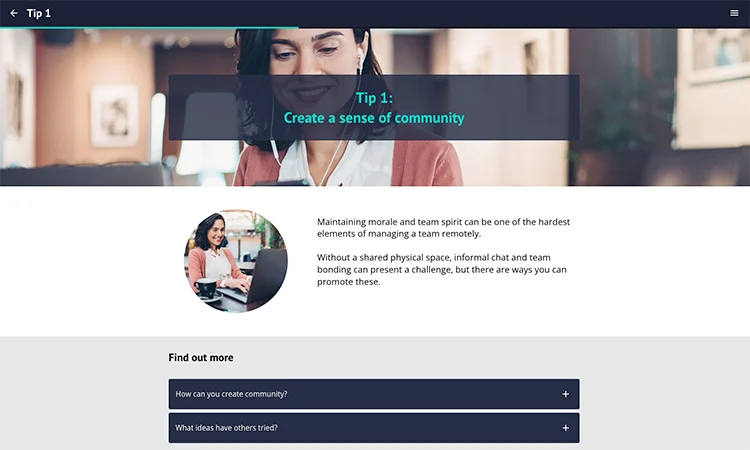
Summary
Creating engaging elearning is absolutely key if you want your project to make a difference. Here are our five top takeaways from our discussion that highlight what it takes:
- Know your audience: Don’t touch your design until you can explain what the audience really needs and why – obvious but so, so necessary! It’s all about the ‘do’ not the ‘learn’.
- Get active: Create meaningfully active and involved learning, which can be done in many forms on and offline, and use storytelling and experiences to aid this.
- Make people think: Reflection can be just as important as doing; and certainly always trumps clicking. Engage the mind, not the mouse, and create space.
- Get personal: There’s no excuse for not personalizing your learning, and we shared many ways to do it! Relevancy is the #1 ask from employees.
- Make sure it’s useful: No one will say no to something that’s straight-up useful. Sometimes it’s not about immersive experiences, but job-aids or quick demos. Cut to it.
Want to learn more about how you can engage your learners? Sign up for our ‘How to create engaging elearning’ course.




